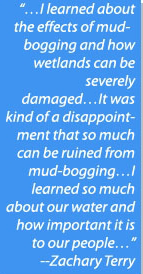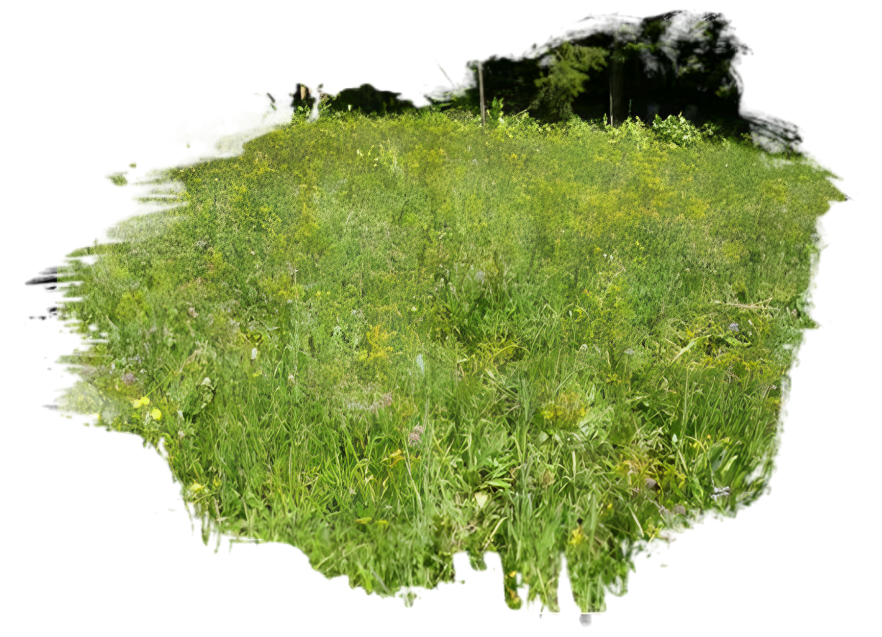 Environmental Justice is the fair treatment and meaningful involvement of all people regardless of race, color, national origin, or income with respect to the development, implementation, and enforcement of environmental laws, regulations, and policies.
Environmental Justice is the fair treatment and meaningful involvement of all people regardless of race, color, national origin, or income with respect to the development, implementation, and enforcement of environmental laws, regulations, and policies.
What is meant by fair treatment and meaningful involvement?
Fair treatment means that no group of people should bear a disproportionate share of the negative environmental consequences resulting from industrial, governmental and commercial operations or policies.
Meaningful involvement means that
EPA has this goal for all communities and persons across this nation. It will be achieved when everyone enjoys the same degree of protection from environmental and health hazards and equal access to the decision-making process to have a healthy environment in which to live, learn, and work. EPA’s environmental justice mandate extends to all of the Agency’s work, including setting standards, permitting facilities, awarding grants, issuing licenses and regulations and reviewing proposed actions by the federal agencies. EPA works with all stakeholders to constructively and collaboratively address environmental and public health issues and concerns. The Office of Environmental Justice (OEJ) coordinates the Agency’s efforts to integrate environmental justice into all policies, programs, and activities.The Office also provides information, technical and financial resources to assist and enable the Agency to meet its environmental justice goals and objectives.
For regulatory purposes under the Clean Water Act, the term wetlands means “those areas that are inundated or saturated by surface or groundwater at a frequency and duration sufficient to support, and that under normal circumstances do support, a prevalence of vegetation typically adapted for life in saturated soil conditions. Wetlands generally include swamps, marshes, bogs and similar areas.” [taken from the EPA regulations listed at 40 CFR 230.3(t)]
For more information on wetlands, go to:
EPA Wetlands Web Site
or
EPA Region 10 Web Site covering the Pacific Northwest

The Nez Perce Tribe Water Resources Division applied for the Environmental Protection Agency’s Environmental Justice Small Grants Program in 2010 and received funding through June 2011. This was a one-year project to address the importance of the Tribe’s water resources and the potential effects mud-bogging (off-road recreational driving with All-Terrain Vehicles) has on our land and water resources.
In March 2010, four Lapwai High School students were selected to participate in an opportunity to learn about the Tribe’s water resources through presentations and field trips. The students were a senior, Alicia Cuevas-Jimenez, and three juniors, Zachary Terry, Sierra Higheagle, and Mary James. For the week of March 28 to April 1, the interns went to various presentations and to several field locations to learn what the Tribe’s role is in the protection, restoration and preservation of our water.
Upon completion of the week, the students submitted a final report. Alicia Cuevas-Jimenez wrote, “Wetlands have many qualities to them that include improving the water quality, reducing floods, and most importantly providing a habitat for the plants and wildlife. Many people do not understand the importance of these wetlands and destroy them without understanding the harm they are causing…These are important issues that should be taken care of, and I would love to be a part of making that happen.”
Mary James wrote, “We went on top of a hill and did some gathering with Gwen Carter (Nez Perce tribal member and gatherer)…we went to the mountains and talked about our 1855 Treaty…It was a fun job, and it feels good to say I got accepted to work with the Tribe. I hope to work with the Tribe soon.”
Zachary Terry wrote, “…I learned about the effects of mud-bogging and how wetlands can be severely damaged…It was kind of a disappointment that so much can be ruined from mud-bogging…I learned so much about our water and how important it is to our people…I also learned that there are some positions in Water Resources that I may want to have a future career in.”

Sierra Higheagle reported, “There were several things I thought were interesting, but one thing that surprised me was how people treated the land. I’ve seen things like mud-bogging grounds on the Nez Perce land, farmers fertilizing their fields that were right next to creeks…this really disappoints me and it makes me want to try to help our tribe with these problems.”
Throughout the internship, the students were immersed in the Water Resources’ daily workings, such as utilities and drinking water, water sampling, wetlands monitoring, non-point source pollution control, Underground Storage Tanks, groundwater, NPT Fisheries Enforcement Dept. and cultural subsistence gathering.
Overall, the Environmental Justice project was to address the importance of the Tribe’s water resources and how it all comes together, and how something that seems so harmless such as mud-bogging in wetland areas can affect our way of life, culture and water resources. An informational documentary video was produced to highlight the Tribe’s views on mud-bogging and the importance of water to the culture and the environment.
The Water Resources staff will present the informational video to the public and the Nez Perce Tribal Executive Committee (NPTEC), who serve as our tribal leaders and advocates, hoping this issue will be looked at more closely and to educate our tribal members and public on the importance of wetlands to the Tribe and wildlife.
The Tribe’s water and land are important resources to the Nez Perce Tribe and surrounding communities. Through this effort, we hope the Tribe will establish policy, protect the natural resources and provide information to tribal members and communities. Awareness is key, and the Tribe can rely on its members to share concerns on issues that need policy and regulation. The health and sustainability of resources are vital for maintaining the culture and wellbeing of the Nez Perce Tribe. Incorporating meaningful involvement of tribal communities will strengthen the Tribe’s efforts in policy, decision-making and environmental justice.
Nez Perce Tribal Executive Committee Chairman:
Brooklyn Baptiste,
Water Resources staff:
Kevin Brackney, Jerrod Rickman, Elisabeth Brackney, Ken Clark,
Casey McCormack, Marcus Oatman, John Wheaton and Darryl Reuben
Fisheries Enforcement:
Cpl.April Skahan and Officer Nathalie Moose
Dan Kane Productions
(Dan Kane & Goldammer)
The Nez Perce Language Program:
Thomas Gregory
Nez Perce tribal member and gatherer:
Gwendolyn Carter
the Lapwai High School students and staff.